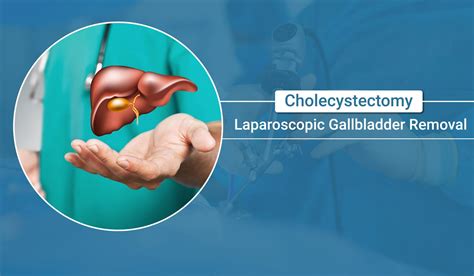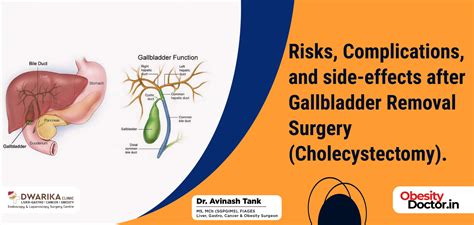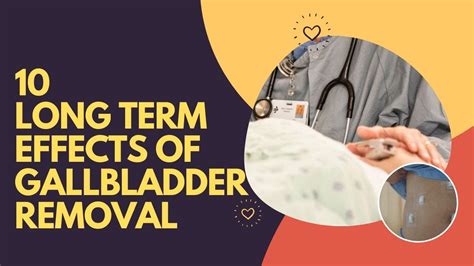Intro
Discover 7 essential tips after gallbladder removal surgery, including diet changes, managing symptoms, and promoting liver health, to ensure a smooth post-operative recovery and minimize complications, with expert advice on nutrition and lifestyle adjustments.
The gallbladder is a small, pear-shaped organ located under the liver that plays a crucial role in the digestive system. It stores bile, a fluid produced by the liver that helps break down fats and absorb fat-soluble vitamins. However, sometimes the gallbladder can become diseased or inflamed, requiring surgical removal. This can be a life-changing experience, and it's essential to understand how to adapt to life after gallbladder removal.
After undergoing a cholecystectomy, which is the medical term for gallbladder removal surgery, patients often experience a range of emotions, from relief to anxiety about the future. The good news is that most people can lead normal lives without a gallbladder, but it may require some lifestyle adjustments. The key to a successful recovery and long-term health is to understand the tips and guidelines that can help manage the changes that come with gallbladder removal.
Gallbladder removal is a common procedure, and thousands of people undergo this surgery every year. While it can be a significant adjustment, many people find that they can still enjoy their favorite foods and activities with a few simple modifications. It's essential to work closely with a healthcare provider to develop a personalized plan for recovery and ongoing care. By following the right tips and guidelines, individuals can minimize potential complications and maximize their overall health and well-being.
Understanding the Role of the Gallbladder

Benefits of Gallbladder Removal
The primary benefit of gallbladder removal is the relief from pain and discomfort caused by gallstones or inflammation. Many people experience significant improvements in their quality of life after surgery, as they are no longer bothered by recurring pain or digestive issues. Additionally, gallbladder removal can reduce the risk of complications, such as infection or cancer, which can arise from a diseased gallbladder.Recovery and Post-Surgery Care

Dietary Changes After Gallbladder Removal
Dietary changes are a crucial aspect of life after gallbladder removal. Since the body's ability to digest fats is affected, it's essential to make some adjustments to the diet. This may include: * Eating smaller, more frequent meals to reduce the load on the digestive system * Avoiding high-fat foods, such as fried foods or rich sauces * Incorporating lean protein sources, such as poultry or fish, into meals * Increasing fiber intake through fruits, vegetables, and whole grains * Staying hydrated by drinking plenty of waterManaging Potential Complications

Minimizing Risks and Complications
To minimize the risks and complications associated with gallbladder removal, it's essential to: * Follow a healthy, balanced diet that is low in fat and high in fiber * Stay hydrated by drinking plenty of water * Avoid smoking and limit alcohol consumption * Exercise regularly, but avoid heavy lifting or strenuous activities * Attend follow-up appointments with a healthcare provider to monitor overall healthLifestyle Adjustments After Gallbladder Removal

Support and Resources
It's essential to have a support system in place after gallbladder removal, whether it's a family member, friend, or support group. Sharing experiences and tips with others who have undergone similar surgery can be incredibly helpful. Additionally, there are many online resources and forums available that provide valuable information and advice on managing life after gallbladder removal.Long-Term Health and Well-being

Conclusion and Next Steps
In conclusion, life after gallbladder removal requires some adjustments, but with the right approach, individuals can lead normal, healthy lives. By understanding the tips and guidelines outlined in this article, patients can minimize potential complications and maximize their overall health and well-being. If you or someone you know is facing gallbladder removal surgery, it's essential to stay informed, ask questions, and seek support from healthcare professionals and loved ones.What are the most common symptoms after gallbladder removal?
+Common symptoms after gallbladder removal include diarrhea, loose stools, and abdominal pain. However, these symptoms are usually temporary and can be managed with dietary changes and medication.
Can I still eat fatty foods after gallbladder removal?
+It's recommended to avoid high-fat foods, especially in the first few weeks after surgery. However, as the body adjusts, it's possible to reintroduce some fatty foods into the diet. It's essential to listen to the body and adjust the diet accordingly.
How long does it take to recover from gallbladder removal surgery?
+Recovery time after gallbladder removal surgery typically takes several weeks. Most people can return to normal activities within 2-3 weeks, but it may take up to 6-8 weeks to fully recover.
We hope this article has provided you with valuable insights and tips for managing life after gallbladder removal. If you have any further questions or would like to share your experiences, please don't hesitate to comment below. Additionally, if you found this article helpful, please consider sharing it with others who may be facing similar challenges. By working together and supporting one another, we can build a community that promotes health, well-being, and resilience.
